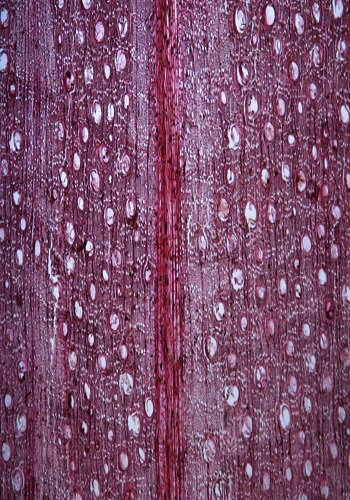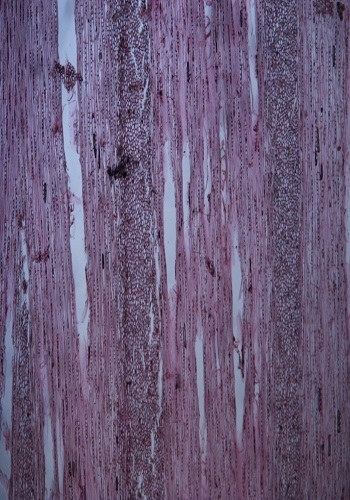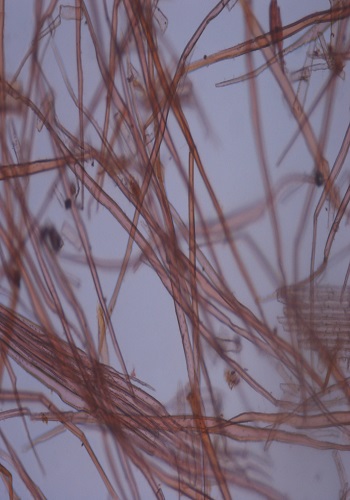The tree is native to India, Pakistan, and Afghanistan through the Mediterranean north into Europe.In Pakistan it is found in the Himalayas and the Hindukush mountains. Specifically it is found in Dir, Chitral, Swat, Hazara, Tirah.
The heart wood is distinct from sapwood. The sapwood is pale reddish-white and heartwood is light reddish to light greyish-brown. The wood is straight or somewhat wavy-grained, medium-fine and uneven-textured.
The growth ring are indistinct with naked eye, 10-16 per inche. The wood diffuse- porous. The vessels are medium sized small to very small, 39-152 u in diameter and 13-45/mm2 in numbers. The rays are of two sorts, the aggregate and simple rays. Aggregate rays are conspicuous with naked eye appearing as broad light brown lines on transverse surface,1-5/mm, upto 20 plus seriate, 350 u, in width much variable in height and upto 2.54 cm high. The simple rays are much more numerous than the compound rays, not visible with the naked eye,59-145 per mm in cross section, uniseriate or 1 seriate on the flanks of aggregate rays ,much variable upto 8-17 plus cells(182 u) in height. Both paratracheal and metatracheal parenchyma are present. The paratracheal parenchyma is sparse and restricted to occaional cells. The metatracheal parenchma is extremely abundant and scattered among the fibers. The fibers are libriform, 0.19-0.97 mm long,11.45-28.92 u in diameter with wall thickness of 3.65-9.29 u.
 |
 |
 |
| Cross view of Oak wood | Tangential view of Oak wood | Wood fibers of Oak |
The wood is used in making of agricultural implements, rural construction, tool handles and rollers. The wood is also excellent for fuelwood and charcoal making.
1. Pearson, R.S and H.P. Brown.1932. Commercial Timbers of India.pp989-992.
2. Sheikh, M.I.1993. Trees of Pakistan. Pakistan Forest Institute, Peshawar.pp-111.
3. Siddiqui, K.M., M. Ayaz and I. Mahmood.1996. Properties and Uses of Pakistani Timbers. Pakistan Forest Institute, Peshawar.pp 81-82.